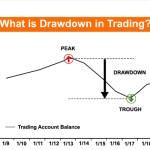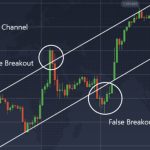Algorithmic Orders
What Are Algorithmic Orders?
Algorithmic orders are trade instructions executed by complex computer algorithms based on predefined criteria such as price, timing, and volume. These orders use advanced mathematical models and are designed to optimize trade execution by breaking large orders into smaller trades, executed over time to minimize market impact or take advantage of specific conditions. Algorithmic orders are commonly used by institutional investors, hedge funds, and high-frequency traders, but they are increasingly available to retail traders through brokerage platforms.
For example, a Volume-Weighted Average Price (VWAP) algorithm aims to execute an order at the average price weighted by volume over a specific time period. The algorithm dynamically adjusts the trade size and timing based on market conditions to match or beat the VWAP. Other common types include time-based algorithms, market-making algorithms, and mean reversion strategies.
How to Use Algorithmic Orders
To use algorithmic orders, traders input specific criteria into a trading platform or rely on pre-built algorithms offered by brokers. For instance, you can set an algorithm to buy or sell a certain amount of shares over a set period, or based on the movement of the stock’s price relative to market conditions. The algorithm will automatically monitor the market and execute trades as it finds optimal opportunities according to the instructions.
Algorithmic orders are particularly useful for executing large trades without causing significant market disruptions. By breaking down a large trade into smaller pieces, the algorithm can gradually enter or exit a position without causing dramatic price movements, which can happen with traditional large block trades.
When to Use Algorithmic Orders
Algorithmic orders are best used when you need to execute large trades without moving the market or when you want to achieve a specific price goal, such as beating the VWAP or a time-weighted average price (TWAP). Institutional investors often use algorithms when dealing with illiquid stocks or when managing large portfolios. For retail traders, algorithmic orders can be useful for day trading, swing trading, or when trading in highly volatile or thinly traded stocks.
Additionally, algorithmic trading is valuable when you need to trade across multiple assets or exchanges quickly and efficiently. It’s also effective when managing multiple small trades to reduce slippage and improve execution speed.
Pros and Cons of Algorithmic Orders
Pros:
- Precision: Algorithms allow for highly precise execution based on predefined conditions, reducing the risk of human error in trading.
- Speed: Algorithms can analyze large amounts of data and execute trades much faster than a human trader could, taking advantage of market opportunities in real-time.
- Reduced Market Impact: Breaking large orders into smaller trades helps prevent significant price movements, making it easier to enter or exit large positions without driving the price up or down.
- Cost Efficiency: Algorithms can help traders achieve better prices by optimizing trade execution and minimizing slippage, saving money over time, especially for frequent traders.
Cons:
- Complexity: Setting up and managing algorithmic orders requires a deep understanding of market dynamics, financial instruments, and programming. Errors in setting up the algorithm can lead to unintended or suboptimal trades.
- Technology Dependency: Algorithmic trading is heavily reliant on technology and connectivity. A technical glitch, delay, or system failure could result in missed opportunities or incorrect trades.
- Market Vulnerability: During periods of extreme market volatility or “flash crashes,” algorithmic orders can exacerbate price swings or lead to unintended market disruptions if many algorithms are triggered at once.
- Costs for Retail Traders: While algorithmic trading is common for institutional investors, retail traders may face higher fees, commissions, or access costs, depending on their broker’s offerings.
In summary, algorithmic orders offer precise, automated trade execution that can optimize trading strategies, especially for large or complex trades. However, they come with complexities and risks that traders must manage, including potential system failures and market disruptions.







